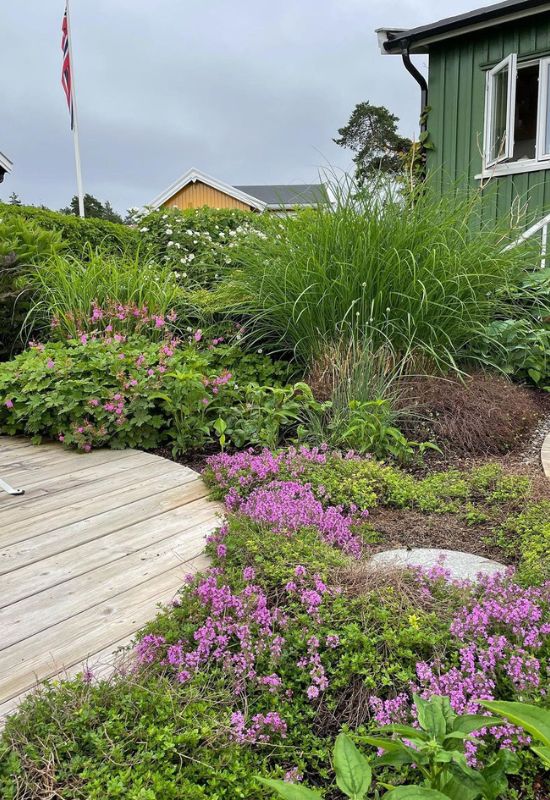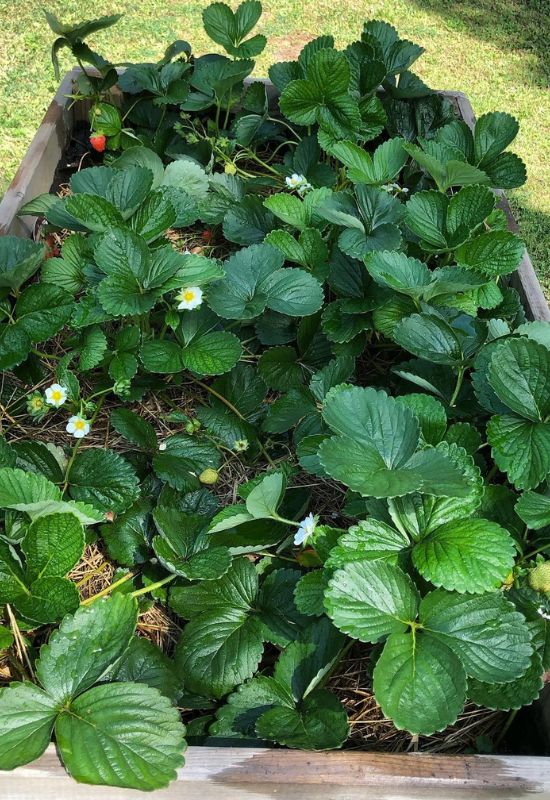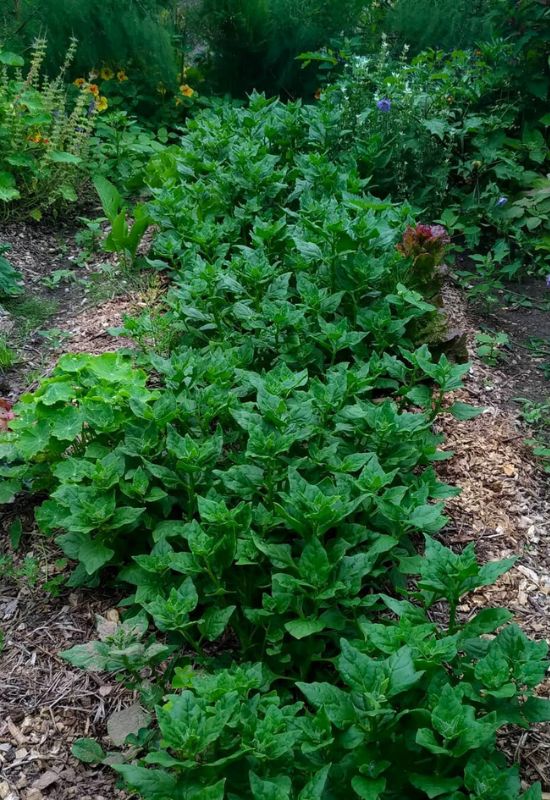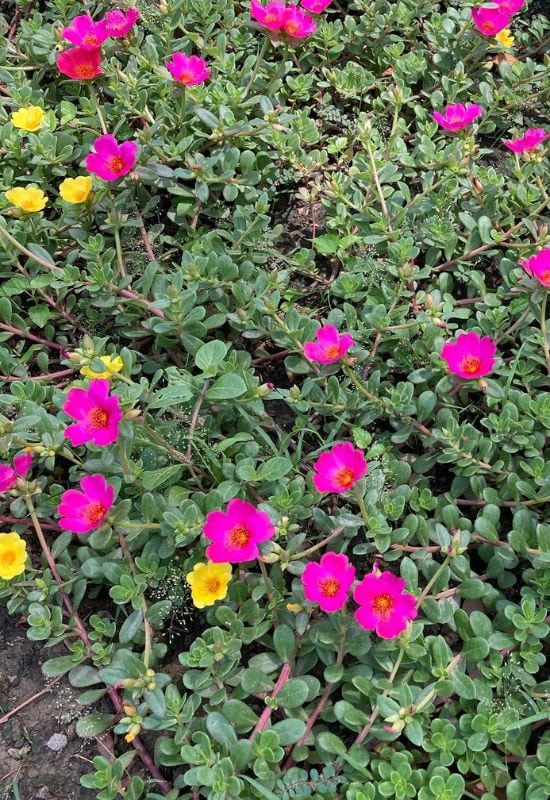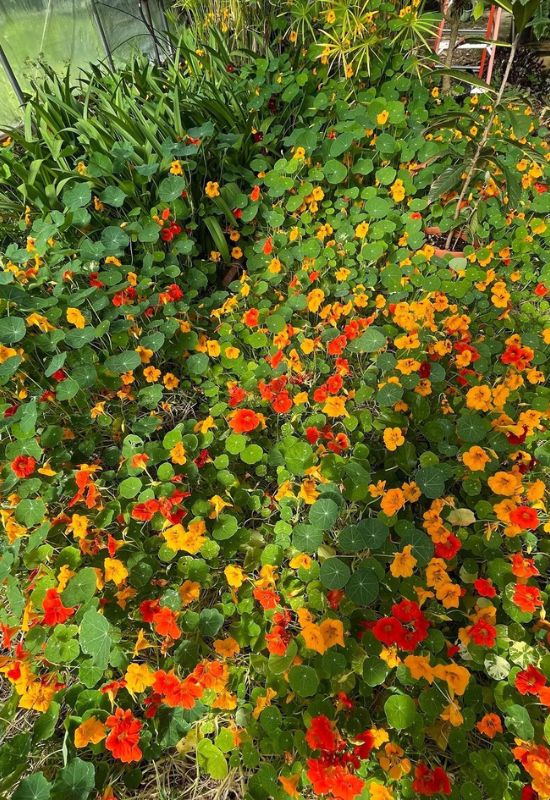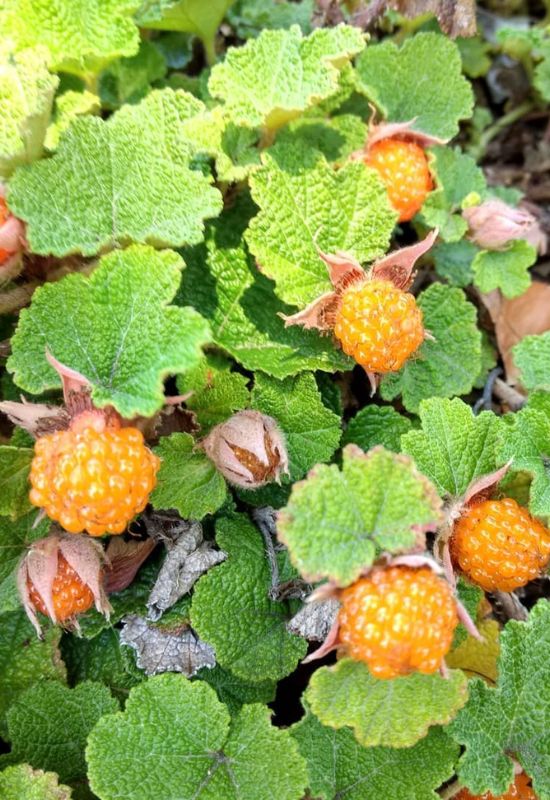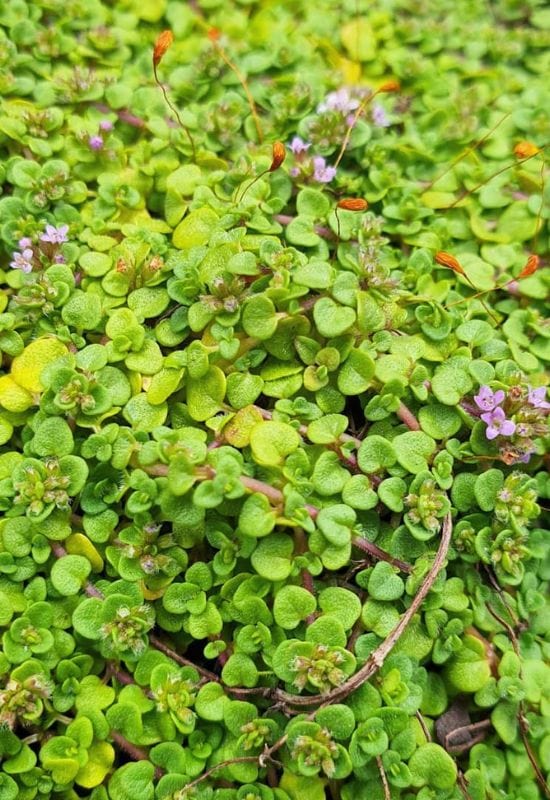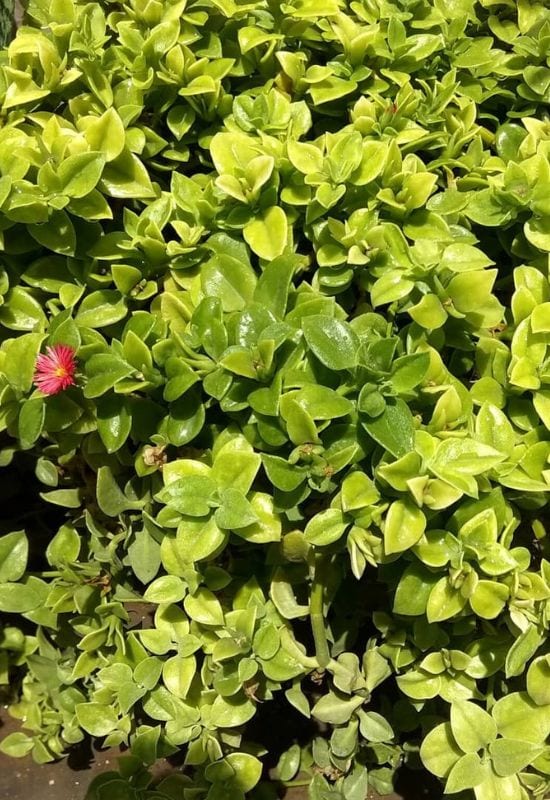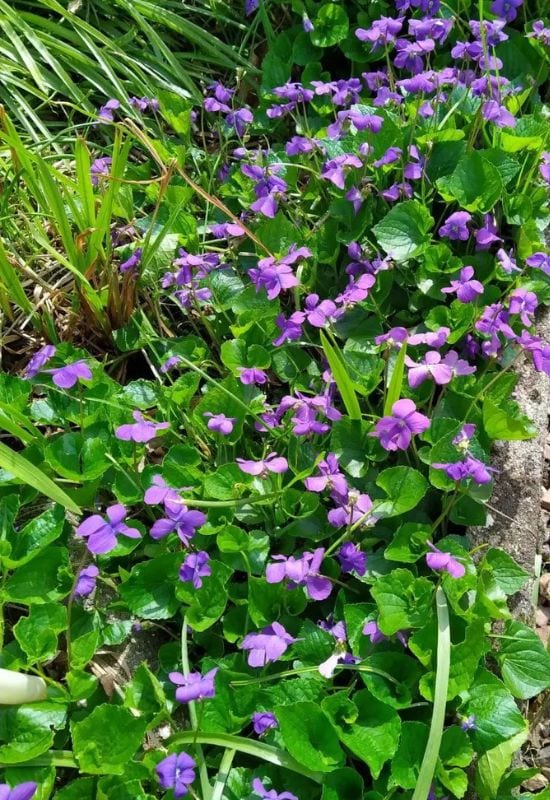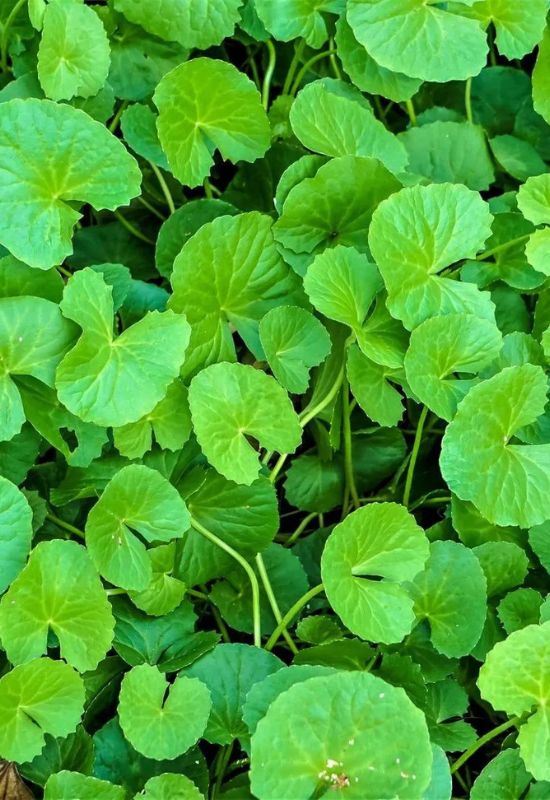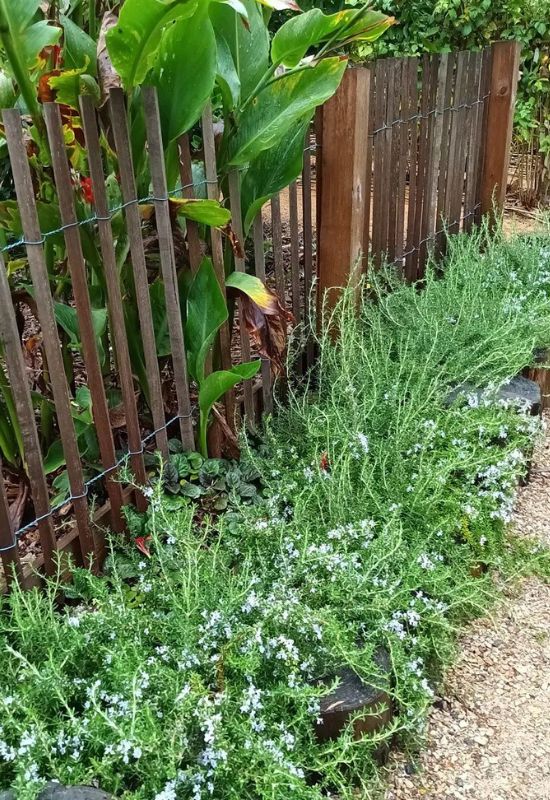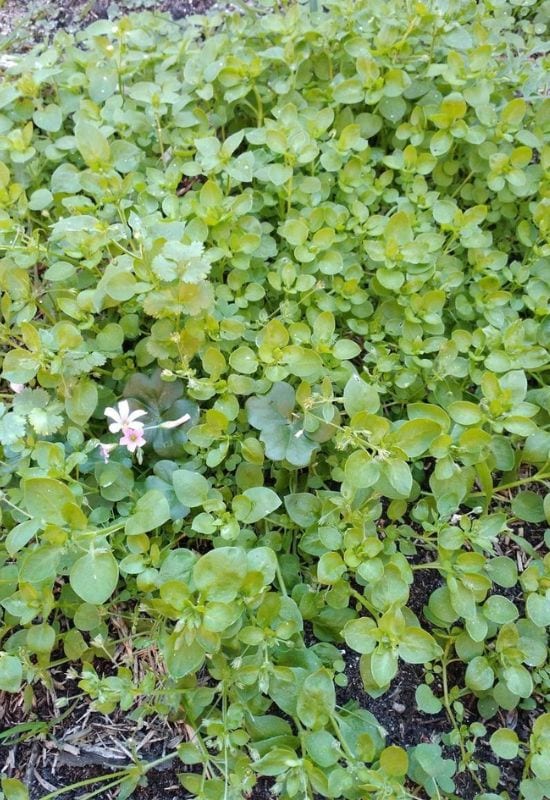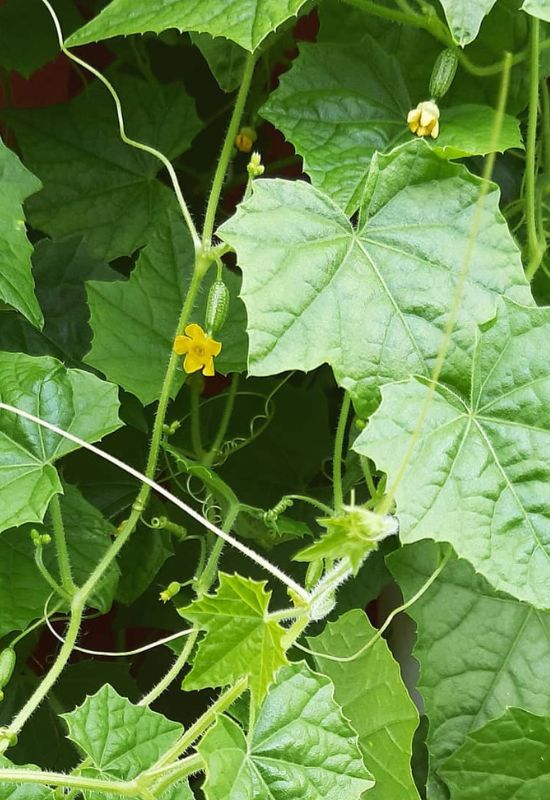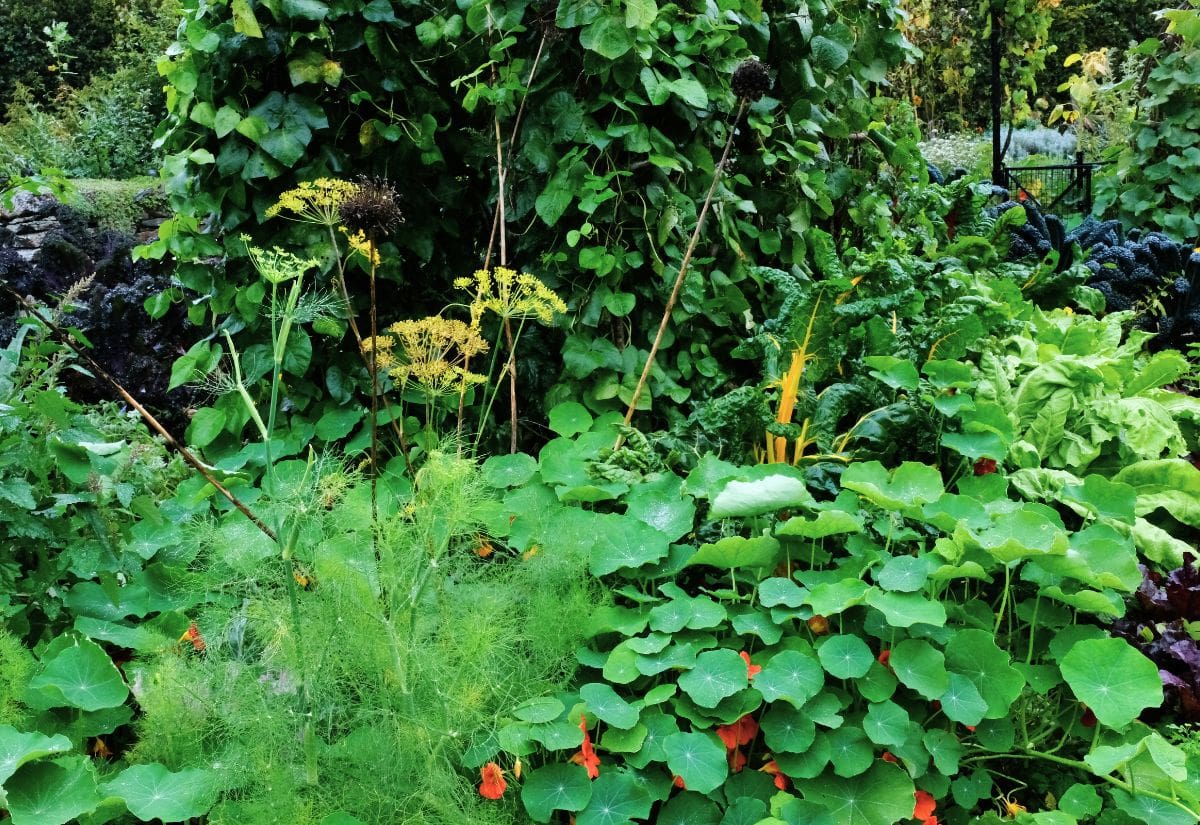
As you aim to reduce your grocery expenses, elevate your yard’s visual appeal, or swap out your conventional lawn for a low-maintenance and delectable alternative, edible ground covers present a solution as delightful as it is functional.
Step into the captivating realm of “foodscaping”, a masterful blend of landscaping and food gardening that transforms your backyard into a delicious diversity, offering a feast at your feet, and unfolding green carpets of flavor, where beauty and bounty thrive side by side.
Spanning from vivid flowering varieties to resilient succulents and enduring evergreens, ground cover plants, boasting striking flowers, appealing berries, captivating leaves, fragrant scents, and year-round greenery, serve as the unsung champions of ornamental gardens.
Typically, they are used to suppress weeds, manage soil erosion, shield neighboring plants from the harshness of winter, and attract beneficial pollinators like bees and butterflies.
But wait, there’s a delicious twist! These ground covers, when chosen to be edible, can find a home in your vegetable garden, blending aesthetic appeal with delectable culinary benefits.
They serve the same purpose as organic mulch but help maximize productivity in your garden with less sweat on your brow.
Why not invite these low-growing edible flowers, herbs, fruiting plants and vegetables to grace your garden paths?
Use them as an edible grass alternative, or as a ‘living mulch’ in your vegetable patches.
These edible living mulches and ground covers promise to breathe fresh life into your outdoor spaces and add a mouthwatering spin to your everyday meals.
The Benefits of Growing Ground Covers
For folks in dry areas plagued by water shortages, drought tolerant ground covers are a key feature in gardens that are designed to thrive with little to no irrigation, also called xeriscapes.
These plants help to prevent moisture loss from the soil and can be grown on steep slopes to help prevent erosion.
Once they are well-established, edible ground cover plants can be quite low-maintenance and advantageous to your garden.
Some will repel pests or act as a trap crop, meaning that insects will be attracted to them and leave your other plants alone. Certain plants lure pollinators and other beneficial insects, which can improve yields of other crops.
You’ll find numerous articles that tout the benefits of these low-growing plants circling the Internet, but many offer unrealistic information and bad advice on how to integrate these plants into your foodscape.
One of the more common myths about these ground hugging plants is that they will magically eliminate the need to weed your gardens.
Sure, a well-established ground cover planting can help keep weeds at bay, but while it gets going you will need to keep on weeding, and to be entirely honest, probably afterwards too.
How To Incorporate Edible Ground Covers into Your Garden
Crawling plants are also said to be a great way to utilize space underneath taller plants and this can be true. However, many of the recommendations for incorporating these plants in the garden are ill conceived.
You see, some plants will work synergistically when planted together, but some will actually be detrimental to each other.
It’s important to consider that many viruses, bacteria, fungi, and nematodes will affect several different types of plants.
So, you don’t want to plant a ground cover underneath another crop if it’s likely to pass on disease or exacerbate pest issues.
Otherwise you can have your strawberries spread verticillium wilt, a type of fungus, to your eggplants and end up with all your plants dying.
When deciding what types of plants to pair together it’s also critical to think realistically about their growth habits.
For example, planting ground covers with root crops is not very practical if you’re not willing to dig everything up come harvest time.
16 Edible Ground Covers to Spruce Up Your Vegetable Garden and Satisfy Your Palate
Here are 16 of the best edible ground covers for your foodscape:
1. Strawberry (Fragaria × ananassa)
Low-growing strawberries are a wonderful option for an edible ground cover. In addition to producing the sweet, juicy berries we all know and love, their leaves can be used in teas.
There are a few different types of strawberries you can choose from. June-bearing plants produce larger yields and bigger berries, just once a year.
Ever-bearing plants will produce two smaller harvests, one in the spring and another in the early fall. Day-neutral varieties fruit throughout the growing season.
June-bearing strawberries put out more runners than day neutral and ever-bearing varieties. These horizontal stems will develop roots where they hit the ground and grow into new plants, which can help to fill out your ground cover.
Strawberries should not be grown with tomatoes, potatoes, peppers, or eggplant, or planted where they have been for at least 4 years. These crops carry Verticillium root rot fungus, which will destroy strawberry plants.
Planting strawberries with broccoli is a great option, as it has been shown to significantly reduce Verticillium in the soil.
Strawberries are also wonderful a ground cover in an asparagus bed, helping to retain soil moisture and reduce weed pressure for this perennial spring crop.
2. Low Bush Blueberry (Vaccinium angustifolium)
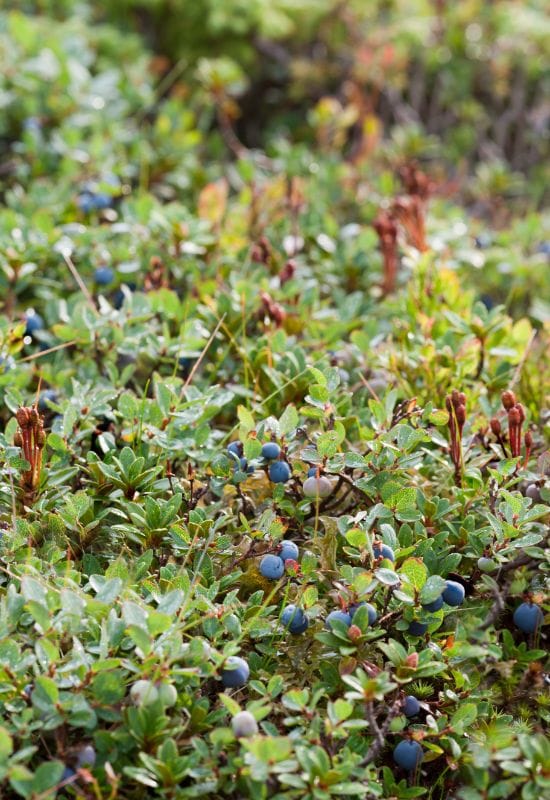
Low bush blueberry, also called wild blueberry, is another delicious fruit that can be grown as a ground cover. This low-growing, shrubby plant does grow wild in the Northeastern United States and Canada, but is also grown commercially for its sweet, edible fruits
Though the berries are smaller than the high bush blueberries you’ll find on the grocery store shelves, they are packed with flavor and rich in antioxidants.
The berries are enjoyed fresh, frozen, or preserved in jam, jelly, syrup, or wine. They can be added to muffins, pancakes, pies, and other baked goods.
The plants are an attractive ornamental throughout the growing season. In the spring they produce cute bell-shaped flowers and come autumn, their glossy green foliage turns fiery shades of red.
These hardy little shrubs tolerate frost and can withstand temperatures down to -20 F or more. This makes them a great edible ground cover option for those gardening in places that have harsh winters.
Commercial producers prune the plants regularly to improve fruit production. This is done in the early spring or late fall while the plant is dormant.
Full sun exposure will also improve yields. Plants that grow along shaded forest edges or with heavy weed pressure will produce fewer berries.
3. New Zealand Spinach (Tetragonia tetragonioides)
Despite its common name, New Zealand Spinach, is not, in fact, related to spinach (Spinacia oleracea). However, it is an excellent substitute in culinary preparations and can be a great option for those wanting to grow tasty greens in warm climates and hot summer weather.
This resilient, trailing plant produces an abundance of nutrient-rich, succulent leaves. It is sometimes eaten raw, but due to high levels of oxalates, which can hinder the body’s absorption of essential minerals, it is best enjoyed cooked, especially if consumed in large quantities.
To prepare, boil the leaves for a few minutes, discard the cooking water, cool in fresh water, and then prepare as you would spinach. This process reduces the amount of oxalates and allows the plant’s nutrients to be more readily absorbed.
New Zealand spinach will tolerate drought, but it tastes best when it’s watered regularly. Harvesting often will encourage the plant to produce fresh, lush leaves.
A lack of nitrogen in the soil can cause the plant to bolt, which makes it taste bitter, so be sure to provide adequate nutrients throughout the growing season.
4. Lemon thyme (Thymus citriodorus)
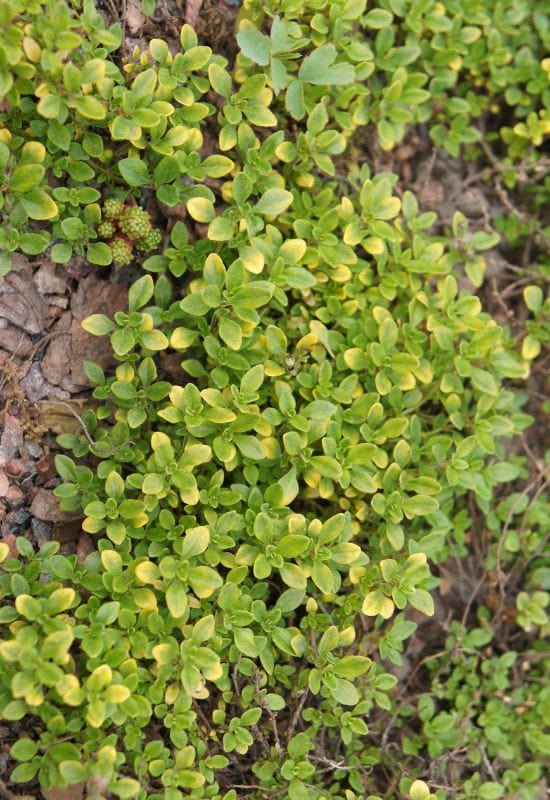
Lemon thyme is closely related to the kitchen herb we all know and love, but this species has a notable citrus flavor and aroma.
It is an attractive plant that grows in low, dense mats. Several cultivars have variegated, golden hued foliage that add to the plant’s ornamental appeal.
Like common thyme, it is a wonderful culinary herb and can be used to season seafood, chicken, and vegetables. It’s a nice addition to soups, marinades, salads, sauces, and more.
Because it does not require much water, lemon thyme is a lovely option for xeriscapes,.
Thyme is a hardy plant and can survive winters in USDA zones 5-9. In zone 4, it may need a bit of extra protection from the cold.
5. Wingpod Purslane (Portulaca umbraticola)
Wingpod purslane is a low-maintenance sprawling plant with succulent foliage and bright, showy flowers in shades of pink, yellow, red, orange, and white.
This easy-to-grow plant is not picky about soil type, but doesn’t like wet feet and can be prone to root rot. It can handle hot temperatures and doesn’t need much water.
Both the stems and leaves are edible and have a sour, salty taste. Wingpod purslane is rich in nutrients and can be enjoyed raw in salads, on sandwiches, and in sauces.
The whole stalk can be streamed or sautéed. It is used for thickening soups and stews due to its high mucilage content. The seeds are also edible.
Though the plant is drought tolerant, regular watering will improve its flavor.
6. Nasturtium (Tropaeolum majus)
Nasturtium is a Peruvian native that is grown as a warm-weather annual in many home gardens. It makes a lovely rambling ground cover that will also climb if trellised. With unique round leaves that look like tiny parasols and brightly colored flowers, this vining plant is a showy addition to any landscape.
The leaves, flowers, and seed pods of this attractive plant are edible. They have a peppery flavor that is similar to watercress. Both the leaves and blossoms can be combined with milder greens, like lettuce, for a pretty and flavorful salad.
The flowers are added to jelly, hot sauce, and cookies or infused in vinegar for a tasty vinaigrette. The spicy leaves can be made into pesto, stuffed like dolmas or added to stir fries, soups, quiche, bread, and more. The pickled green seed pods are often enjoyed like capers.
There are many different varieties of nasturtiums to choose from. The flowers come in shades of pink, orange, red, yellow, or cream. Some cultivars have variegated leaves. Trailing or climbing varieties get quite large, so semi-trailing types may be better suited for small spaces.
Nasturtium is easy to grow and can be started from seeds. It can handle neglect and is fairly drought tolerant. It is okay with some shade, but will flower more prolifically in full sun. Fertilizing the plant will encourage leaf growth, but will also reduce flower production.
7. Creeping Raspberry (Rubus hayata-koidzumi)
Creeping raspberry is a fast growing and low-maintenance perennial ground cover. It has crinkled leaves and sprawling, cane-like stems covered in soft, flexible thorns.
Like many of its relatives, it produces delicious berries. They are yellowish to orangey red in color and taste like raspberry.
In the fall, the leaves turn shades of purple and red, and maintain these colors through the winter months.
While creeping raspberry is fairly adaptable, cold hardiness can be an issue. This plant thrives in hot, dry conditions. It prefers not to be planted in wet, soggy soils or locations where it will be heavily watered.
8. Corsican Mint (Mentha requienii)
Also known as creeping mint, this perennial herb has tiny leaves and only grows about an inch tall. Despite its small stature, it is still strongly aromatic and flavorful, and smells similar to peppermint.
The leaves are used to flavor the alcoholic beverage, crème de menthe, and can be used in a variety of recipes, including salads, drinks, sauces, teas, and more.
Corsican mint is perennial to USDA zone 6, but can be grown as an annual in colder zones and may self-seed if the conditions are right.
Grow it where there is light foot traffic, around stepping stones or bordering pathways, to enjoy a fresh minty aroma every time you walk through the garden.
9. Baby sun rose (Mesembryanthemum cordifolium)
Baby sun rose is an attractive low-growing plant with shiny succulent leaves and small, hot pink daisy-like flowers.
The leaves of baby sun rose are edible and have a sour, salty taste. They can be added raw to salads or used as a beautiful, edible garnish.
This hardy South African native makes a good xeriscape plant, as it is drought tolerant and can handle being watered sporadically. When allowed to spread, it creates a low-maintenance and lush green carpet.
Planting it on steep, dry slopes may help to prevent erosion. It is a good addition to coastal gardens because it grows happily in sandy soils and can handle salty sea air.
This plant does not like soggy, overly wet soil and will suffer from root rot if it is kept too moist.
10. Roman chamomile (Chamaemelum nobile)
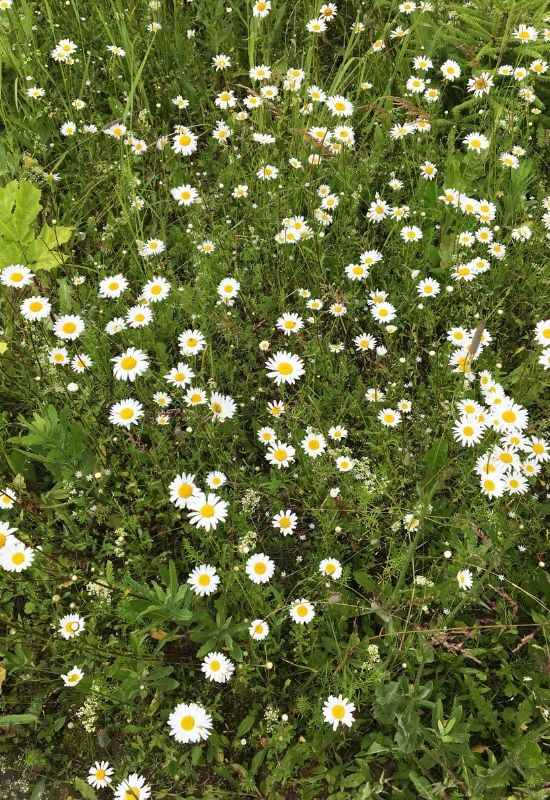
Roman chamomile is a sweetly scented perennial plant that grows in low, spreading mats. It is a well-loved herb that is most commonly known as the main ingredient in a calming tea.
With feathery foliage and dainty white and yellow flowers that look like tiny daisies this herb is a whimsical addition to any garden.
It can also be planted as a low-maintenance lawn alternative. Unlike grass, it doesn’t need to be mowed, watered, or fertilized on a regular basis
To keep it growing low and bushy, trim the plants back when they start to get tall and spindly. Picking the flowers regularly will boost flower production.
The flowers are typically made into tea and can be used fresh or dried.
11. Violet (Viola odorata)
Violet is a low-growing perennial with heart shaped leaves and sweetly scented, deep purple flowers. It is native to Europe and Asia and has naturalized in parts of North America.
While modern day gardeners have largely forgotten this dainty little plant, it is a hardy and attractive ground cover that deserves a place in contemporary landscape designs.
If you live where violets grow wild, you may be delighted to find that you already have them popping up in your yard.
Both the flowers and leaves are edible. The fresh tender young leaves can be added to salads, sandwiches, wraps, and pesto. They can also be steamed or sautéed and added to a variety of dishes.
The flowers can be used as a garnish and as a colorful addition to salads. They are wonderful in a variety of preparations, including jelly, syrup, and infused vinegar and spirits. The colorful blooms are also lovely candied or frozen into ice cubes to spruce up cold drinks.
Violets are hardy and require little maintenance once established. In fact, they grow so well in some areas that they are actually considered a weed.
12. Gotu kola (Centella asiatica)
Gotu kola is a carrot family plant that originated in the tropical regions of the world. This creeping herb has small, round leaves that look like little cups. In fact, gotu kola actually means “cup shaped leaf” in Sri Lankan.
The young leaves can be enjoyed in salads or added to smoothies. The juice of the leaves is used to make a refreshing, sugary green drink that is popular in Thailand.
The plant appreciates a warm sunny spot in the garden with nutrient rich, fertile soil that drains well. It thrives with frequent waterings and regular applications of liquid fertilizers, like compost tea.
As a tropical plant, gotu kola does not appreciate cold temperatures. It is sensitive to frost and will not survive cold freezes. It can, however, be grown as an annual plant during the hot summer months in regions that have harsh winters.
13. Creeping rosemary (Salvia rosemarinus var. prostratus)
Creeping rosemary is a popular edible ground cover. It is actually just a variety of rosemary that has a “prostrate,” or low lying, growth habit. This cultivar grows to about 1 foot tall and can spread 4-8 feet.
Overall, this Mediterranean native is quite hardy and can handle drought, some shade, many different soil types, and sea spray. It can survive some colder temperatures (down to 15-20 F), but will not make it through harsh winters.
The plant won’t do well in wet, humid environments or clay soil. Overwatering can cause poor plant health and death.
Use this well-loved aromatic culinary herb in a variety of dishes. It adds wonderful flavor to chicken, roasted vegetables, bread, soup, sauces and more.
14. Chickweed (Stellaria media)
Chickweed’s delicate leaves and dainty flowers add a touch of charm to the garden.
This sprawling little plant has succulent stems and is typically only about an inch tall. In moist, fertile soil it spreads into lush, dense mats. It can tolerate poorer soils, but will stay much smaller and more spindly.
Chickweed is a highly adaptable plant that has naturalized throughout the United States and grows worldwide. It is a common weed in many places and may already be popping up in your yard.
The plant readily self seeds and can root along its creeping stems. It spreads quickly and vigorously making it a great option for a luscious and low-maintenance ground cover.
This nutritious herb is edible and is best enjoyed fresh. Add the greens to salads or use them like sprouts on sandwiches and wraps. It can be blended into sauces and added to pasta or soup.
Birds also love chickweed. If you’re raising chickens, you can give them the fresh greens to boost their health and help improve egg production.
15. Oregano (Origanum vulgare)
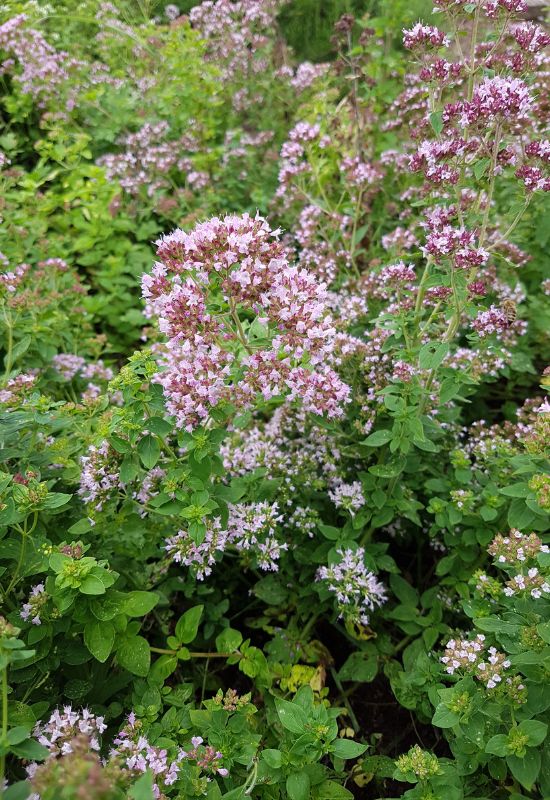
This popular culinary herb makes an attractive and aromatic ground cover. Its pretty purple flowers add a pop of color and attract beneficial pollinators to the garden.
Oregano does best in well-drained, drier soils. It doesn’t need a lot of nutrients and actually thrives in poorer soils. It is moderately drought tolerant. Avoid overwatering as it is susceptible to root rot.
This low-maintenance herb can handle both hot and cold temperatures. It is hardy in USDA zones 4-10, but can be grown as a summer annual in colder climates.
The plant does not do well in high humidity and must have good airflow in humid climates.
Both the leaves and the flowers are edible. Their spicy herbal flavor is a common addition to pizza sauce, soups, bread, salads, marinades, sauces, and more.
16. Cucamelon (Melothria scabra)
Cucamelon produces crunchy fruits around the size of a large grape that look like tiny watermelons and taste something like a sour cucumber.
This cucumber relative is grown as a summer annual across much of the United States.
Also known as mouse melon or Mexican sour cucumber, it has become popular among backyard gardeners and farmer’s market vendors.
It is valued for its small, unique fruits that can be eaten raw, pickled, or added to stir fries.
While several gardening websites cite cucamelons or cucumbers as a good option for an edible ground cover, I mention them last because they’re quite literally the lowest on my list of plants to use for this purpose.
True, their sprawling habit means that they will crawl across the soil, but if given the opportunity these plants prefer to climb. Which means that if grown as a ground cover with other plants close by, they’ll be constantly trying to use them as a trellis and smothering them in the process.
Rather than being diligent about constantly pulling down the vines as they try to climb everything in the garden, I’d much rather just grow them with proper trellises.
Growing cucamelons vertically helps prevent fungal issues and also means a better harvest, since slugs will damage fruits laying on the ground. It’s also much easier to spot and pick the fruits if they’re hanging.
Edible ground covers are a great option for your foodscaping project. These low-growing plants produce tasty fruits, greens, and culinary herbs helping to cut food costs and adding beauty and intrigue to your yard.

Written By
Amber Noyes
Amber Noyes was born and raised in a suburban California town, San Mateo. She holds a master’s degree in horticulture from the University of California as well as a BS in Biology from the University of San Francisco. With experience working on an organic farm, water conservation research, farmers’ markets, and plant nursery, she understands what makes plants thrive and how we can better understand the connection between microclimate and plant health. When she’s not on the land, Amber loves informing people of new ideas/things related to gardening, especially organic gardening, houseplants, and growing plants in a small space.

